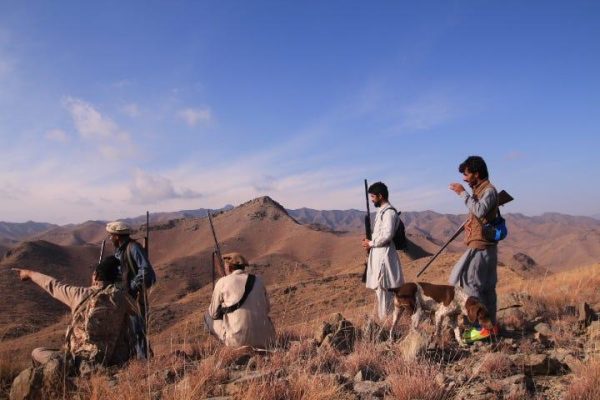The Narratives of War in Pakistan’s Kurram District

Kurram: A Conflict Unraveled
Besieged Communities and Shattered Hopes
Kurram, a district in Pakistan's northwestern tribal region, has been gripped by a relentless siege for months due to the closure of the lifeblood Thal-Parachinar Road. Essential supplies, including food and medicine, have become scarce, leaving besieged communities in a desperate struggle for survival.
The road closure dates back to a surge of sectarian violence in late November, claiming the lives of over 80 people in the first three days of fighting.
Fragile Truce and Broken Promises
Amidst the bloodshed, the government managed to broker a fragile peace agreement after weeks of relentless fighting that claimed around 130 lives. However, cautiously optimistic hopes for stability were abruptly extinguished when a deadly attack targeted the deputy commissioner and his team as they cleared the route for a relief convoy on January 4th.
The ambush brutally shattered illusions of peace and exposed the enduring challenges of restoring harmony to this historically volatile region.
Roots and Rivalries: A Complex Conflict
The violent clashes in Kurram have reignited fierce debates among various stakeholders, including activists, politicians, academics, and scholars. Competing interpretations - a sectarian conflict, a land dispute, or a resurgence of Taliban-driven violence - wage a war of words in the battle for public opinion.
Both rival tribes, the Sunni and Shia, engage in an aggressive narrative battle, each accusing the other of instigating violence, harboring militant groups, and receiving support from foreign powers.
Post-Merger Reality and Failed Expectations
After a lull in violence between 2007 and 2011, Kurram's security situation has steadily deteriorated since the merger of the former Federally Administered Tribal Areas (FATA) into Khyber Pakhtunkhwa province in 2018.
This merger, initially hailed as a step towards peace, actually fueled a resurgence of violence revolving around disputed lands. Intermittent land-related clashes escalated into sectarian conflicts, further destabilizing the region.
Adding to the chaos, remnants of Tehreek-e-Taliban Pakistan (TTP) emerged, launching attacks from neighboring Afghanistan. Border skirmishes between Pakistan and Afghanistan further strained Kurram's fragile security.
Displacement and Divided Loyalties
Research suggests that displaced populations in post-conflict zones often return with increased awareness and rights. This heightened consciousness can, unfortunately, lead to renewed tensions over disputed land.
In Kurram, the Pakistani government's failure to adequately rehabilitate displaced Sunni tribes has exacerbated grievances and fueled ongoing disputes.
Lack of Capacity and Lack of Trust
The merger into Khyber Pakhtunkhwa instilled hope for improved governance and stability. However, the transition has been rocky, with the new administration struggling to maintain order and wield authority in Kurram.
These institutions lack the resources, training, and capacity to control the situation. Protests and dissatisfaction with the perceived favoritism of one community over another have further eroded trust in the government.
Competing Narratives and Ignored Perspectives
Kurram's unrest has sparked heated discussions in the national media, but most analyses overlook critical local perspectives. Rival tribes strategically shape different narratives to mobilize support and seek solidarity, obscuring the region's complexities.
This lack of understanding has fueled confusion and obscured the root causes of the violence. Complicating matters further, the former FATA was largely shielded from media coverage during military operations, limiting public knowledge of the region's struggles.
A Neglected Conflict
Despite the severity of the violence, the provincial government seemed to deprioritize addressing the crisis in Kurram. Instead, it vested its energy in protests against the detention of Imran Khan.
Critics condemned the government's neglect, while supporters accused the federal government of weakening the provincial administration. The unrest in Kurram became a political football, further undermining efforts to find lasting solutions.
Alliance and Geopolitics
The Kurram violence involves local actors who have forged alliances with national and international stakeholders. Sunni groups partnered with the Taliban, seeking to capitalize on the region's strategic importance and recruit fighters.
The Shia Turi community, on the other hand, allied with the former Afghan government, aligning themselves in opposition to the Taliban.
These allegiances have added layers of complexity to the conflict, influenced by geopolitical dynamics beyond Kurram's borders.
Conclusion: A Path to Peace
Unlocking peace in Kurram demands a genuine devolution of power to the local administration. By restoring trust and credibility, the local leaders can tackle the arduous task of resolving land disputes impartially.
The military and security agencies must refrain from interfering, allowing the local political system to establish its authority. The creation of a new land commission, tasked with resolving disputes impartially, holds promise for a lasting solution.